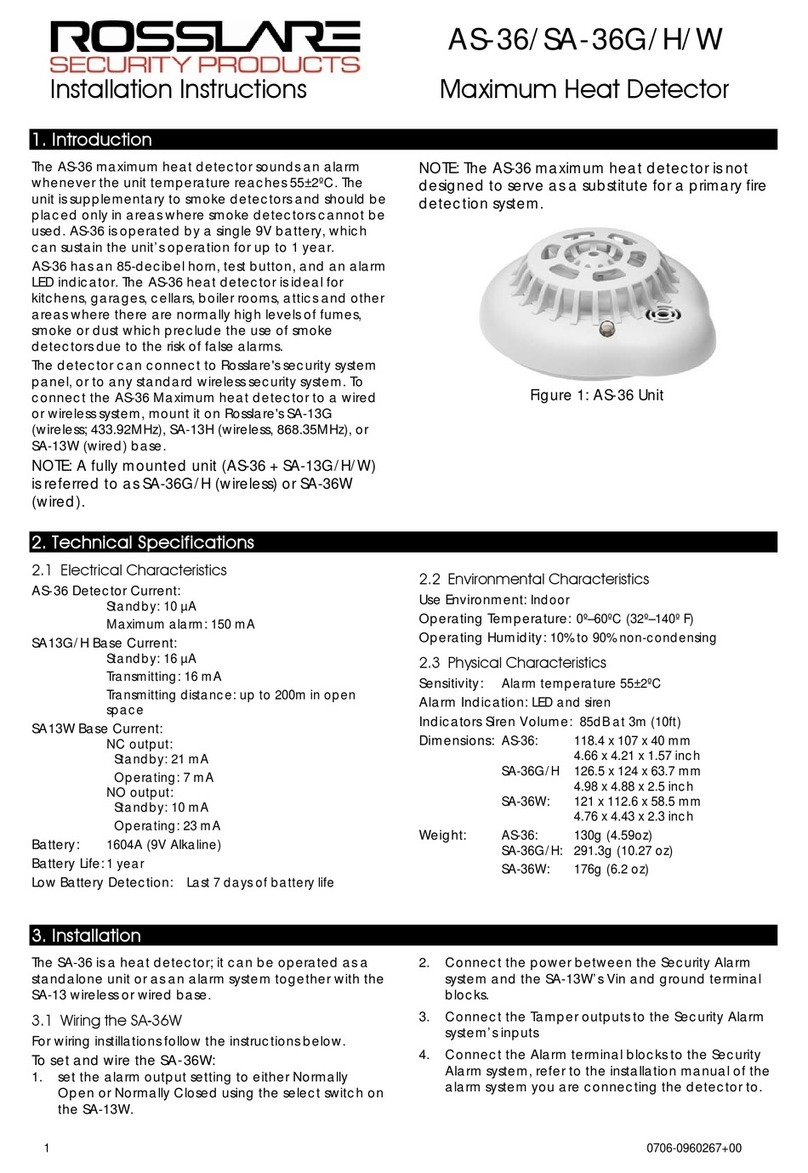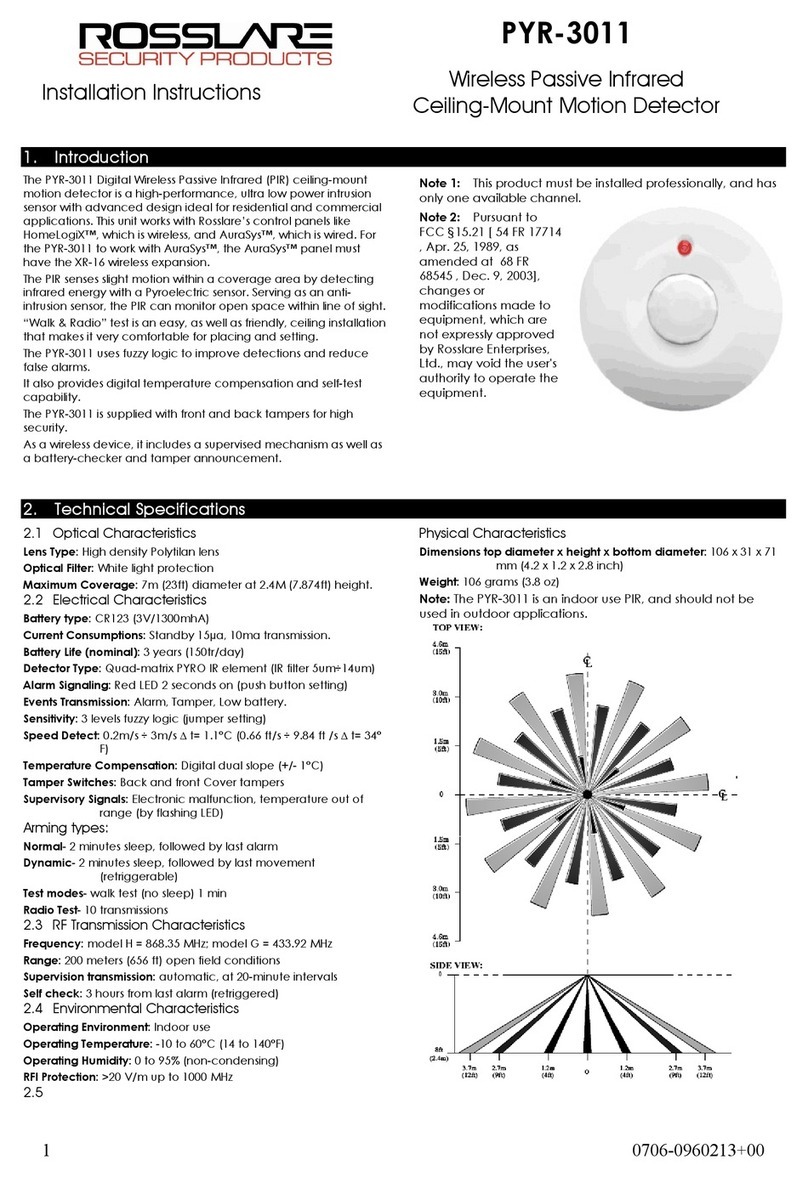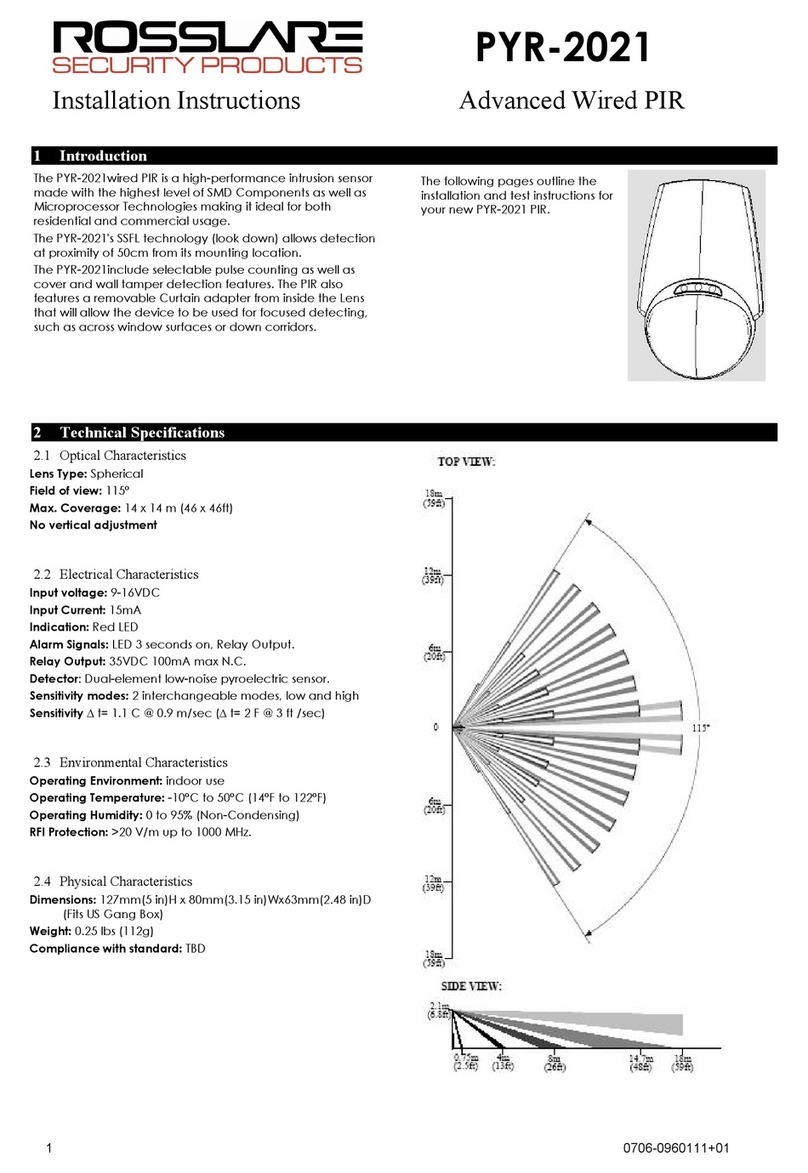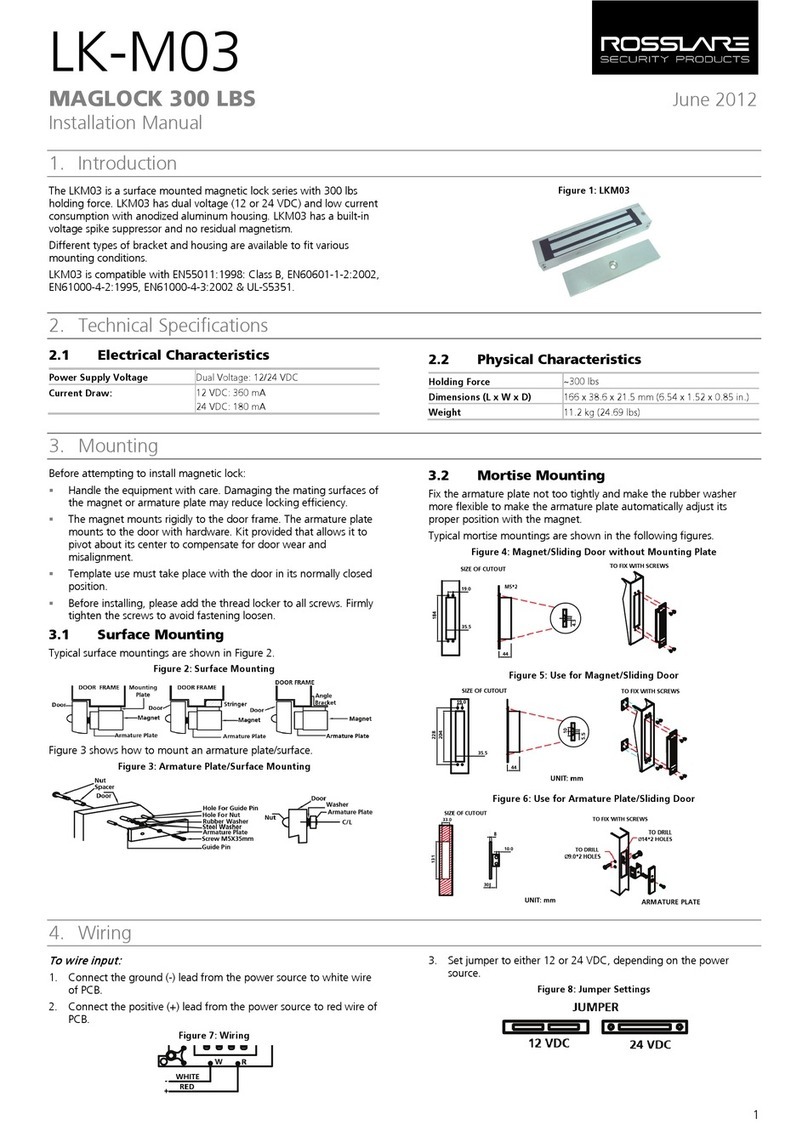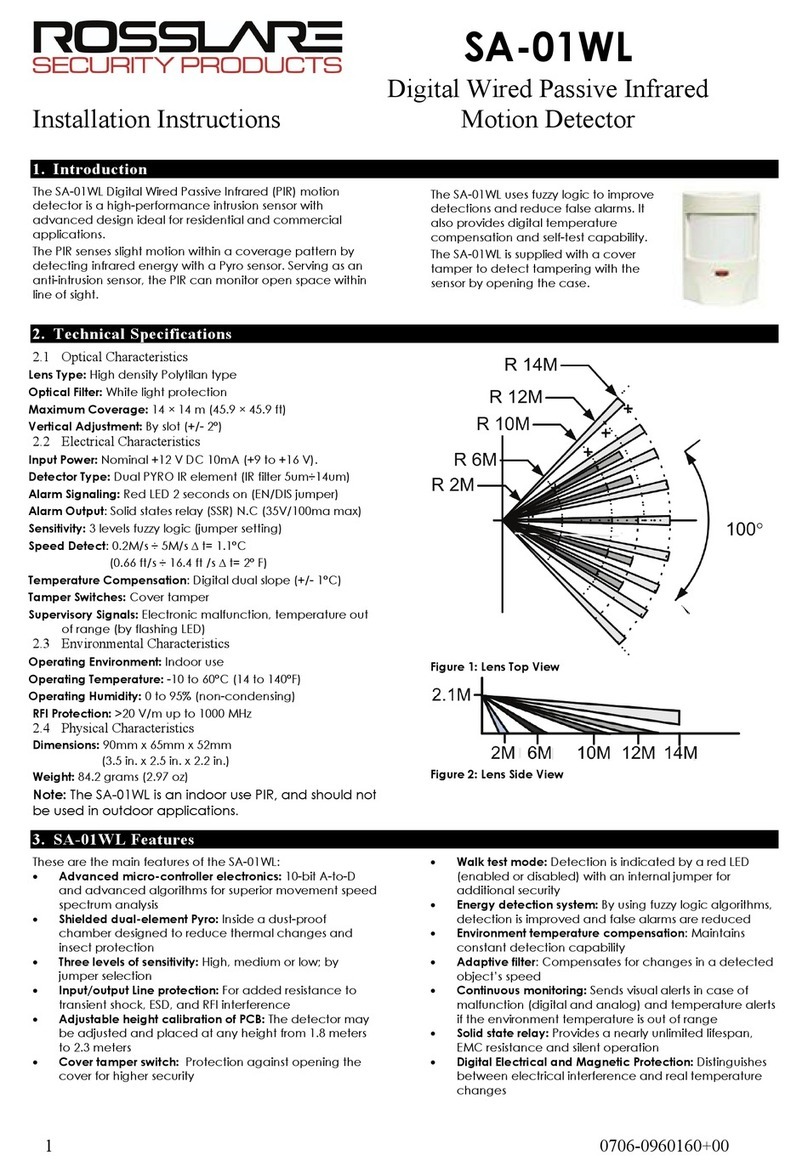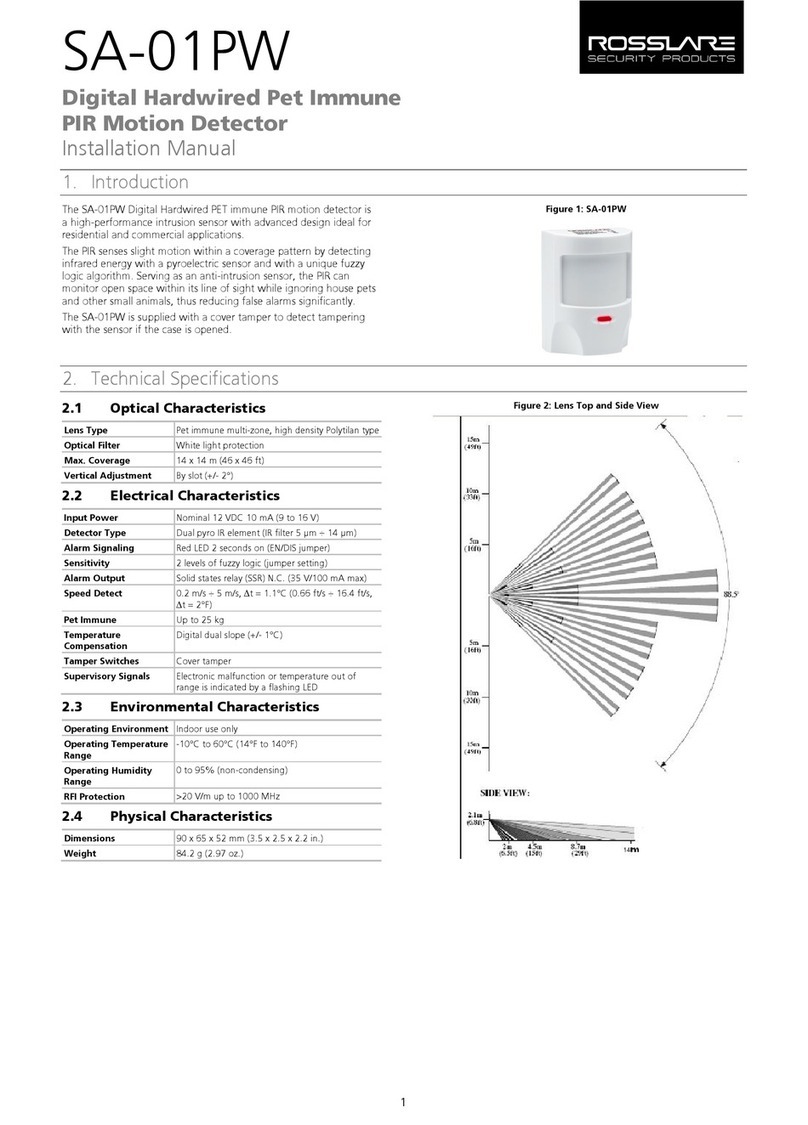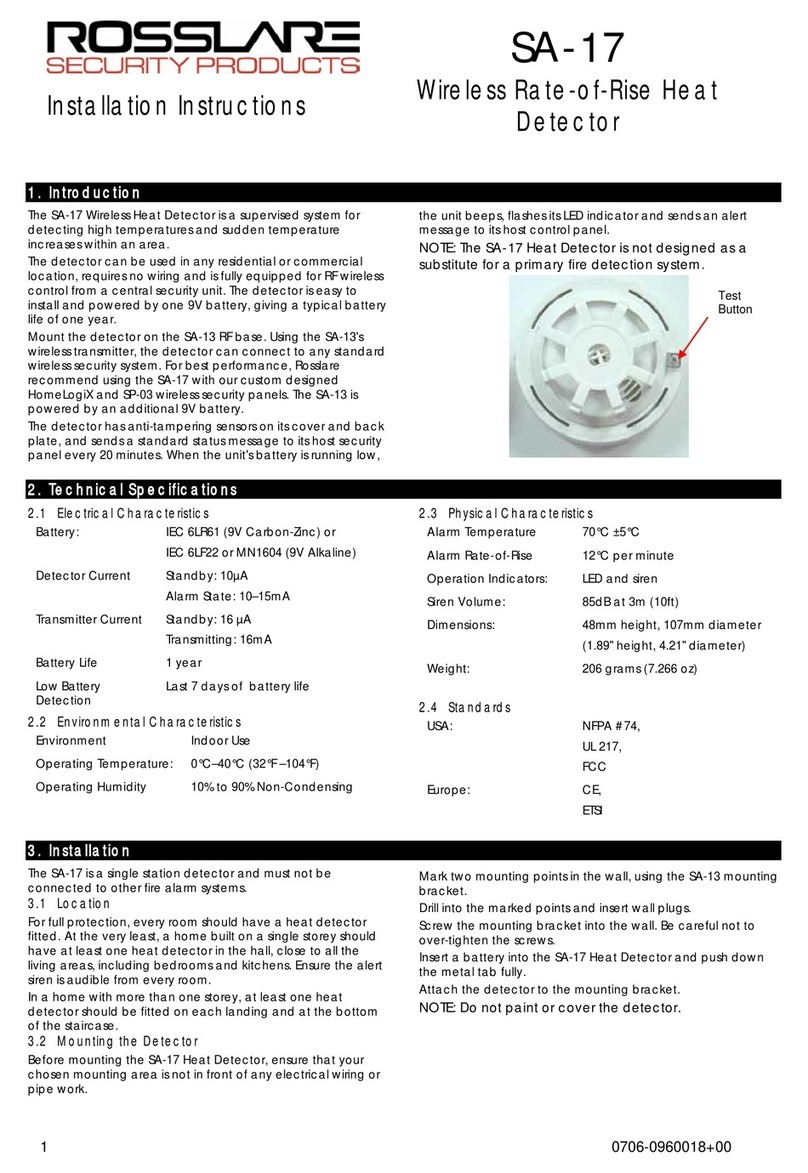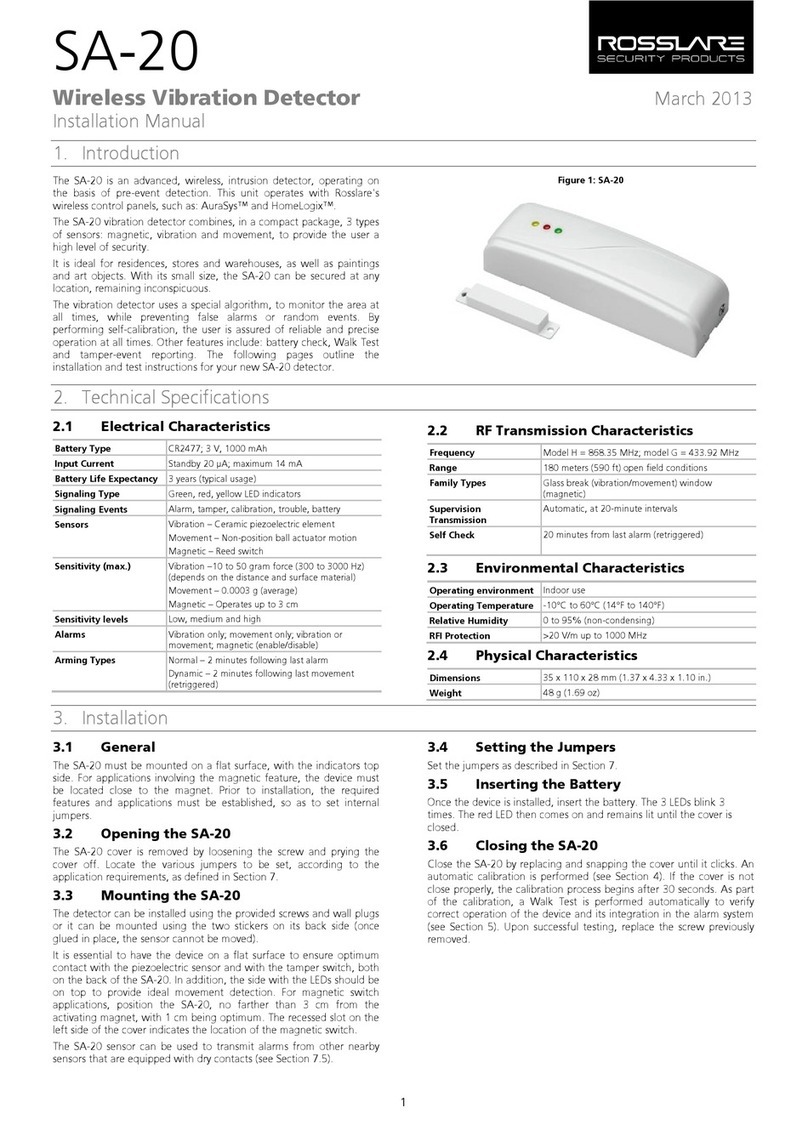3
6. Jumpers Setting
6.1 Setting the Sensitivity (JP2)
SA-01P has two jumpers, JP1 and JP2, to set the operation method
of the PIR. Insert a jumper to activate the desired setting.
To prevent false alarms caused by house pets or harsh environments,
two sensitivity modes are available:
Medium – for normal usage
High – for harsh environments and where the total pet’s weight
is more than 25 kg
To set the jumpers:
Medium – jumper off
High – jumper on
Normal – JP1 off
Dynamic – JP1 on
6.2 Radio Mode Jumper (JP1)
To save power, the SA-01P goes into Sleep mode after sending an
alarm. The time the device is latent is set by JP1.
Normal (always 2 minutes between alarms) – jumper off.
Dynamic (2 minutes retriggered between alarms) – jumper on.
When the Dynamic mode is set, an alarm event is sent only if there
were 2 minutes of silence prior to the current alarm. This setting is
useful for places with a high level of traffic such as factories.
6.3 Back and Cover Tamper
There are two kinds of tamper protection in this detector. The cover
tamper protects against the opening of the case and the back
tamper (optional) protects against taking the unit off the wall. To
enable the back tamper, cut the R11 wire.
6.4 Vertical Calibration
If the SA-01P PIR is to be mounted at a height above 2.1 m or below
1.9 m, calibrate the PCB by moving the PCB up or down in the PIR
housing accordingly before fixing it (Figure 5). The calibration scale
on the PCB and the calibration marker on the PIR housing help you
achieve the optimum calibration setting.
Figure 5: Calibration Scale
The PCB calibration scale is located on the top right hand side of the
PCB (left). The calibration marker is located on the inside of the PIR
housing (right).
If mounting the PIR above 2.1 m, move the PCB (+) up in the PIR
housing so that the calibration marker is parallel to a + scale (for
example: 2). This ensures that the detection area is focused closer to
the unit.
If mounting the PIR below 1.9 m, move the PCB down (-) in the PIR
housing so that the calibration marker is parallel to a - scale (for
example: -2). This ensures that the detection area is focused further
from the unit, therefore maximizing detection range.
Either way, refrain from installing the detector higher than 2.3 m or
lower than 1.8 m since it reduces efficiency.
Figure 6: Front of PCB
7. Testing the Detector
7.1 Self Check
Perform a self check by pressing the pipe light for less than 3 seconds.
7.2 Walk Test
Evaluate the performance of the detector by executing a 2-minute
Walk Test.
1. Ensure all of the settings in the PIR are adjusted as necessary for
the location according to the installation instructions above, and
that the PIR case is closed and the locking screw is firm.
2. Apply power to the unit. The LED flashes on for 2 seconds and off
for 2 seconds for a period of 1 minute. During this time, all PIR
paths are being self tested. After the test is successful, the LED
switches off. At this point a Walk Test can be performed.
3. During the walk, test the LED flashes every time the detector
detects motion. There is a two-second wait period before the next
detection.
4. It is recommended that the installer test the detection by going
over the protected area and seeing that the detection pattern is
good.
5. The test mode can be entered for a one-minute period, by
depressing S3 from the pipe light for less than three seconds.
7.3 Radio Test
Evaluate the RF path quality by pressing the pipe light on the front of
the PIR for more than 3 seconds.
The detector transmits 10 transmissions to the control panel in 4-
second intervals. Refer to the alarm panel manual for RF quality test.
8. Enrolling the Detector
After a successful self test, you can enroll the detector to a specific
zone in the alarm system.
The easiest way to do so is to open and close the front tamper. For
specific steps to be followed for the enrollment, refer to the manual
supplied with the alarm panel.
9. Low Battery Supervision
Prior to each RF transmission, the battery voltage is sampled. If the
voltage is low for 3 consecutive transmissions, a "low battery"
message is sent with the next transmission. When the battery is low,
the LED blinks during alarm and tamper events. Once the battery
level returns to the minimum preset value, the fault transmissions
cease.
